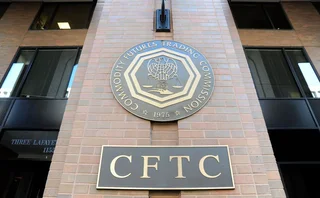
US minimum bank asset ratios suggested for larger banks
European banking supervisors might follow the example of US regulators and develop the concept of well-capitalised banks with higher minimum protective capital than required under the Basel bank capital adequacy Accord, according to some European regulators.
“The authorities might wish to consider setting higher early warning levels for these banks to enable action to be taken while they were still able to operate,” said the paper.
Banking authorities probably need to take into account the likelihood that reductions in the capital of a large bank could affect its access to financial markets, even when its capital exceeds the minimum by the 1988 Accord, the paper said.
The Basel I Accord determines the minimum proportion of their assets that large banks must set aside to guard against losses from banking risks. The more complex, risk-based Basel II Accord, which the Basel Committee hopes will come into force in late 2006, retains the 8% minimum.
The paper noted that in the US, which sets perhaps the highest requirements for banks that want to be in the well-capitalised category, large banks maintain substantial excess capital. Under US rules, well-capitalised banks must have a minimum total risk-assets ratio of 10% with a tier 1 ratio of 6%, against 4% under Basel I. Tier 1 capital is shareholders’ equity plus published reserves.
Regulators commenting on the paper said other countries might consider going down the US route.
The paper’s authors said evidence suggests that banks large enough to have a credit rating target a solvency standard that is significantly more conservative than that required by the current Basel Accord. The suggestion, said the paper, is that bank access to important credit markets like the swap markets may significantly influence the choice of a solvency standard.
“If large banks generally have to target solvency standards that are much higher than those implicit in the current Accord, to have the flexibility to carry out the type of business in which they are engaged, this may indicate that the current level is already quite low,” the paper said.
The paper, on regulatory and economic solvency standards for internationally active banks, is co-authored by Patricia Jackson, head of the UK central bank’s regulatory policy division, her colleague Victoria Saporta and William Perraudin of Birkbeck College, London. Their views do not necessarily reflect those of the Bank of England.
It was prepared for a workshop on an economic assessment of the Basel II banking Accord currently taking place in Basel, Switzerland. The workshop is organised by the Basel Committee on Banking Supervision, the architect of the Basel accord, the Centre for Economic Policy Research and the Journal of Financial Intermediation.
Only users who have a paid subscription or are part of a corporate subscription are able to print or copy content.
To access these options, along with all other subscription benefits, please contact info@risk.net or view our subscription options here: http://subscriptions.risk.net/subscribe
You are currently unable to print this content. Please contact info@risk.net to find out more.
You are currently unable to copy this content. Please contact info@risk.net to find out more.
Copyright Infopro Digital Limited. All rights reserved.
As outlined in our terms and conditions, https://www.infopro-digital.com/terms-and-conditions/subscriptions/ (point 2.4), printing is limited to a single copy.
If you would like to purchase additional rights please email info@risk.net
Copyright Infopro Digital Limited. All rights reserved.
You may share this content using our article tools. As outlined in our terms and conditions, https://www.infopro-digital.com/terms-and-conditions/subscriptions/ (clause 2.4), an Authorised User may only make one copy of the materials for their own personal use. You must also comply with the restrictions in clause 2.5.
If you would like to purchase additional rights please email info@risk.net
More on Regulation
Driving IT resilience through managed services
How Murex is supporting financial institutions with managed services and providing strategic solutions
US Basel equivalence questioned as EU patience wears thin
MEPs say unfaithful US implementation of Basel III could trigger review of access to EU markets
The Term €STR transition: challenges and market readiness
The progress, challenges and factors shaping the adoption of Term €STR as financial institutions transition from Euribor
CFTC takes red pen to swaps rules, but don’t call it a rollback
Lawyers and ex-regs say agency is fine-tuning and clarifying regulations, not eliminating them
EU edges closer to calming FRTB fund-linked fray
Dealers say temporary solution is a step in the right direction but won’t fully resolve all issues
European Commission changes tune on proposed FRTB multiplier
Banks fear departure from original diversification factor undermines case for permanent relief
Supervisors should be mindful of geopolitical risks, says IMF
Shock events cause sizeable swings in asset pricing, institution’s latest report highlights
Bowman won’t commit to stress-testing the tariff shock
Nominated Fed vice-chair stonewalls calls to run ad hoc scenario similar to 2020 Covid test







